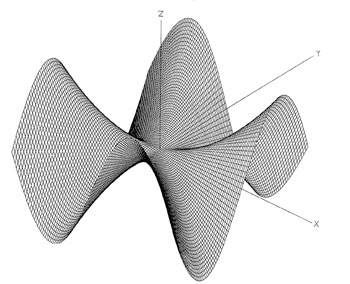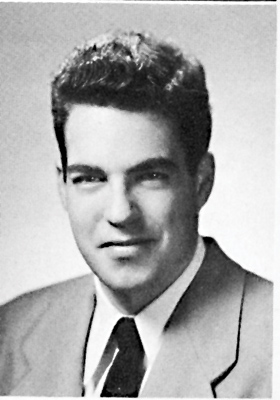The Code of Converse
I enjoyed immensely the Fall 2012 article by John B. Bennison ’74 about Amherst’s early-1970s computer lab.
My high school had an IBM 1130 donated in 1968. To start it up, you fed a cold start card into the card reader, which would then execute 78 commands to allow the internal hardware to start its routines. The initiation for our school computer club was to cold start the machine without the card reader. This involved memorizing the 78 commands and entering them in binary notation. The first program I sold to IBM, in 1968, allowed the cold start process to occur in just 17 steps.
It was amazing to use the same computer at Amherst. To those of us who supervised the Converse computer lab: could you ever forget the Physics 11 students who stumbled through their first FORTRAN program to predict the trajectory of a ball traveling through the center of the earth?
Computer art, a skill encouraged by Betty Steele and Norton Starr of the mathematics department, often obscured the windows of the lab (see Amherst magazine, Spring 1974).
Steve Senft ’74 and I spent much of freshman year trying to prove a theory in polycube math. Recall the video game Tetris, which had seven unique two-dimensional pieces that you would rotate to fill an endless rectangle. Our polycube challenge consisted of 28 unique three-dimensional pieces, each containing five cubes. If you took one pentacube as a model, you could theoretically build a larger model with the remaining 27 pieces. Steve, using actual wood blocks, met that challenge. It took me six months longer, but I found all the solutions for each of the 28 pentacubes with my program.
A few of us would spend hours watching a graphic representation of this process on the computer video screen after midnight. The computer would try various pieces, adding, removing, rotating at a dazzling speed. Some of the pentacubes had thousands of solutions, some only two.
Joel Nizin ’74
Ridgewood, N.J.


Printed computer art, like these examples, often obscured the windows of the basement lab in Converse.
Many marriages, thanks to Ralph
Jack MacKenzie ’52’s tribute to Ralph Engelsman ’52 (In Memory, Summer 2012) brought a lump to my throat and a tear to my eye. Ralph had a profound influence on my life.

In the fall of 1950 two sophomores had written a musical play entitled Amherst with Music. They asked Ralph, a dramatic arts major, to direct the play. Ralph accepted and recruited his two roommates—Johnny Walker ’51 and myself—to assist him. Johnny did the set designs and I helped conduct tryouts at Mount Holyoke for the women’s parts. Ralph had a “tin ear.”
Ralph and I went to MHC and chose a number of girls for the chorus and the two main female parts. The girl I chose for the ingénue role was a beautiful sophomore who had a lovely soprano voice and was an accomplished dancer. Her name was Myrna but she was known as Chris. I attended a number of the rehearsals and then called her to ask for a date. Chris asked me to meet her at the next rehearsal and introduce myself. She informed me that “since I was Ralph’s roommate I must be a very nice person.” Chris and I were married in 1953.
That introduction to Chris had a profound influence on my family. Chris introduced my brother Jack ’54 to Dorrit Werner (MHC ’55), whom he married in 1955. Our daughter Lisa (MHC ’79) introduced our son Scott ’77 to Marjorie Woodhouse (MHC ’81) in 1977 and they were married in 1982. Marjorie is the daughter of Lyn Morrow Woodhouse (MHC ’53), who was Chris’ physiology lab partner. That’s a small world for you. All of these marriages are still going strong except that of my brother Jack, who died in 1973.
Bill Purdy ’51
Libertyville, Ill.

Remembering a teacher
I read, with some dismay, about the death of Russell Weaver ’84, also known as Cian Yates, in the Fall 2012 Amherst. I knew him as “Mr. Weaver”; he was a former teacher of mine.
Twenty-one years ago, Mr. Weaver taught me in his English class at The Albany Academy, an all-boys private school in Albany, N.Y. He was an excellent teacher who promoted the development of critical thinking in his students, and he assiduously drilled us to adhere to a crisp, direct writing style. He possessed a keen grading pencil, from which I often received sharp critiques. He was fair, however, and his criticism demonstrated a genuine commitment to the development of his students.
As one might expect from a former Green Beret, Mr. Weaver had a no-nonsense, professional demeanor, and he was not shy about enforcing his high expectations of our overall comportment. However, he possessed an independent streak, which manifested itself both in his hair, worn long but neat, and in creative and engaging classroom exercises. His syllabus and teaching, in particular one unit on Native American literature, seemed designed to challenge us to engage in a deeper examination of, and to make a difference in, our lives outside of school. Despite Mr. Weaver’s uncompromising nature, I observed his compassionate treatment of classmates who were struggling academically or socially.
Mr. Weaver introduced me to Amherst College through his unreserved support of the Amherst experience. He prominently displayed a picture of Johnson Chapel in his classroom and often spoke fondly of his time at Amherst.
Unfortunately, Mr. Weaver moved on from the Academy after that school year and I lost touch with him. I doubt that he ever learned of my acceptance to Amherst or that I have drawn from the skills he taught me ever since. I owe a debt to him.
David Nardolillo ’98
Albany, N.Y.
We Want to Hear From You
Amherst welcomes letters from its readers. Please send them to magazine@amherst.edu or Amherst Magazine, PO Box 5000, Amherst, MA 01002. Letters must be 300 words or fewer and should address the content in the magazine.